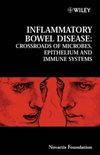Functional analysis of fronto-striatal reconstruction by striatal grafts.
引用次数: 24
Abstract
Excitotoxic lesions of the neostriarum induce cognitive and motor deficits in experimental animals, and model both the neuropathology and symptoms of Huntington's disease. Striatal grafts implanted into the denervated striatum survive, differentiate into both striatal- and non-striatal like neurons, restore input and output connections of the damaged striatum, and alleviate both motor and cognitive impairments in experimental rats and monkeys. Several lines of evidence suggest that the functional recovery is mediated by the grafts providing a reconstruction of the cortico-striato-pallidal circuitries of the host forebrain, including functional mapping of circuitry by immediate early gene induction, push-pull perfusion, microdialysis, electrophysiology, the lack of efficacy of pharmacological treatments and the behavioural studies themselves. Detailed analysis of motor recovery in an operant lateralized choice reaction time test indicares that for optimal functional recovery the animals require specific retraining in the stimulus-response associations lost by the lesions, which may have important implications for optimizing the functional efficacy of striatal grafts both in experimental models and clinical trials.纹状体移植重建额纹状体的功能分析。
新纹状体的兴奋性毒性病变在实验动物中诱导认知和运动缺陷,并模拟亨廷顿病的神经病理学和症状。在实验大鼠和猴子中,植入失神经纹状体的纹状体移植物能够存活,并分化为纹状体和非纹状体样神经元,恢复受损纹状体的输入和输出连接,减轻运动和认知障碍。一些证据表明,功能恢复是由移植物介导的,这些移植物提供了宿主前脑皮质-纹状体-白质回路的重建,包括通过即时早期基因诱导、推拉灌注、微透析、电生理学、缺乏药物治疗效果和行为研究本身来绘制电路的功能图。对操作性侧化选择反应时间测试中运动恢复的详细分析表明,为了实现最佳功能恢复,动物需要对损伤丢失的刺激-反应关联进行特定的再训练,这可能对优化纹状体移植物在实验模型和临床试验中的功能效果具有重要意义。
本文章由计算机程序翻译,如有差异,请以英文原文为准。
求助全文
约1分钟内获得全文
求助全文

 求助内容:
求助内容: 应助结果提醒方式:
应助结果提醒方式:


